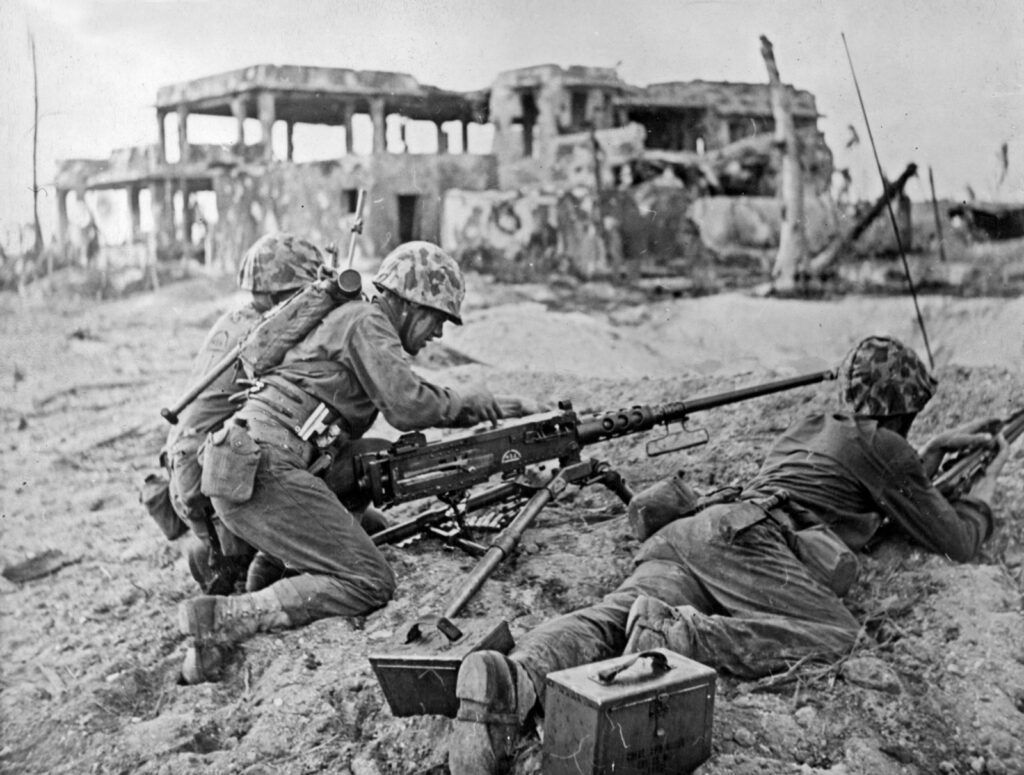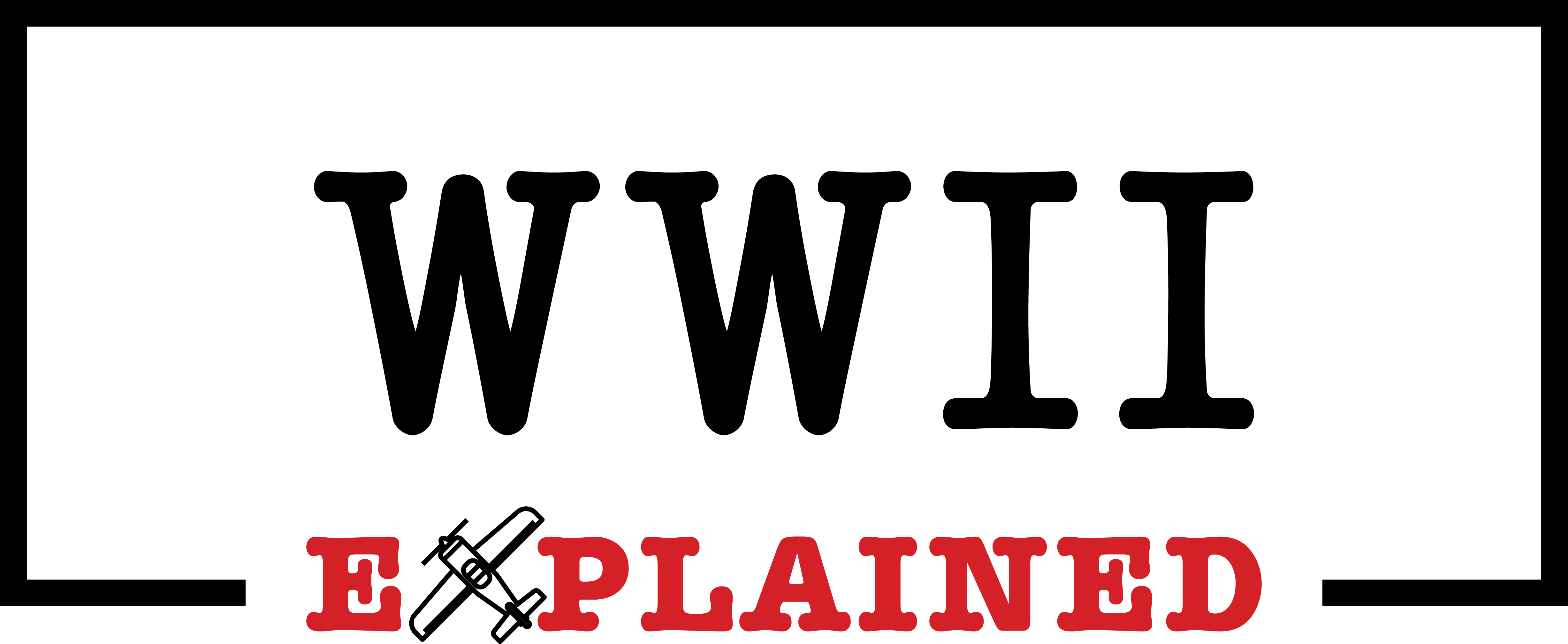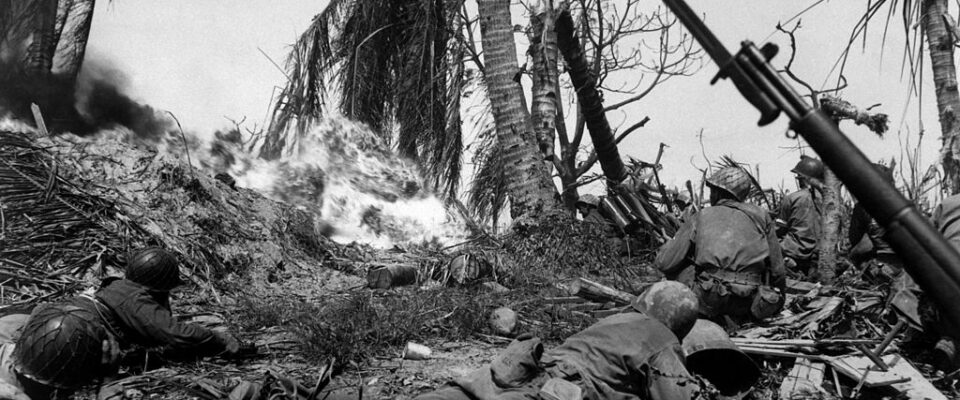Beginning on January 31 until February 3, 1944, U.S Marine and Army troops launched an amphibious offensive on three islets in the Kwajalein Atoll in the Marshall Islands, where Japanese forces had established their “outer-ring” defensive perimeter. Kwajalein Island in the south and Roi-Namur in the north were the first of the Marshall Islands to be captured by U.S. forces as part of the Pacific campaign of World War II . The capture of the islands would allow the U.S. to carry out its planned assault and represented the next step in its advance towards the Philippines and ultimately the Japanese home islands.
The “Island-Hopping” Strategy
The Treaty of Versailles that brought World War I to an end awarded Japan with control over the Marshall Islands in the West Pacific. Kwajalein was the world’s biggest coral atoll, consisting of around 90 islets surrounding a 655-square-mile lagoon. Soon after the start of World War II, the Japanese had established the Marshall Islands as an essential part of their defensive parameter, which as a result, had become a crucial target for the Allies and their strategic planning.
Following Japan’s success in the initial months of World War II, in 1943, Admiral Chester Nimitz proposed an aggressive counteroffensive strategy comprising of a series of amphibious attacks on specific Japanese-controlled islands on the way to the Philippines before reaching Japan. The strategy, known as “Island-Hopping,” drew on the notion that simply isolating Japanese troops on their islands, letting them “wither on the vine”, would be equally as effective as obliterating them through a direct attack and a lot more economical for Allied forces.
Gilbert and Marshall Islands Campaign
The brutal battle of Tawara, a small atoll in the Gilbert Islands of the central Pacific, was an integral predecessor to the Allied campaign in the Marshall Islands. In November 1943, 5000 Japanese troops were garrisoned on the atoll. Their fierce resistance resulted in the loss of 1,000 U.S. Marines and another 2,100 were wounded. Almost all the Japanese troops on Tawara perished, demonstrating a prime example of the never-surrender attitude that would serve as the foundation of the entire Japanese war effort.
Between Tarawa and the Philippines, were 2,000 miles of sea, as well as over a thousand dispersed atolls, with many reinforced by Japanese troops. The lessons of “Terrible Tarawa” (as the Marines called it) allowed the Allies to prepare for the ferocious fighting that would characterize the central Pacific campaign. Furthermore, because there was no interference from the Japanese fleet or any land-based aircraft from other islands, Nimitz decided that it would be safe to bypass the other Marshall Islands and advance to the westernmost atolls in the chain: Kwajalein and Eniwetok.

Amtrac carries U.S. forces ashore at Kwajalein, 31 January 1944.
U.S. Attacks Kwajalein, Roi and Namur
Following a huge air and naval attack that lasted two months, on January 30, 1944, a U.S amphibious assault force of 85,000 troops and 300 warships advanced towards the Marshall Islands. On February 1, the 7th Infantry Division landed on Kwajalein Island and the 4th Marine Division landed on the twin islands of Roi and Namur. Roi was captured by a single marine corps regiment on that first day followed by Namur which was captured by the second day. On Kwajalein, the 7th Infantry bombarded the Japanese garrison for three days until the island was secured on February 4.
Despite being hugely outnumbered from the start, the Japanese proceeded to fight until the bitter end. On Roi and Namur, Japanese casualties amounted to over 3,500 killed and around 200 captured, while the U.S. suffered less than 200 Marines killed and around 500 wounded. On Kwajalein, almost 5,000 Japanese were killed, and only several soldiers were captured. The 7th Infantry suffered 177 fatalities and 1,000 more wounded.

Aftermath of U.S. Victory
The somewhat easy capture of Kwajalein was accomplished beyond Nimitz’s expectations. It demonstrated U.S. amphibious capabilities as well as the effectiveness of the preparatory training following the brutal battle of Tarawa. The victory allowed Nimitz to fast-track operations, and invade Ebeye Island on 3–4 February, Engebi Island on 18–19 February, Eniwetok Island on 19–21 February, and Parry Island on 22–23 February 1944. An attack on Truk Lagoon devastated the Japanese position, with American planes destroying 275 Japanese aircraft and around 40 ships.
Their success in the Marshall Islands gave U.S. forces a major advantage, allowing them to continue their amphibious operations in the central Pacific, opening the way to the Mariana Islands.

